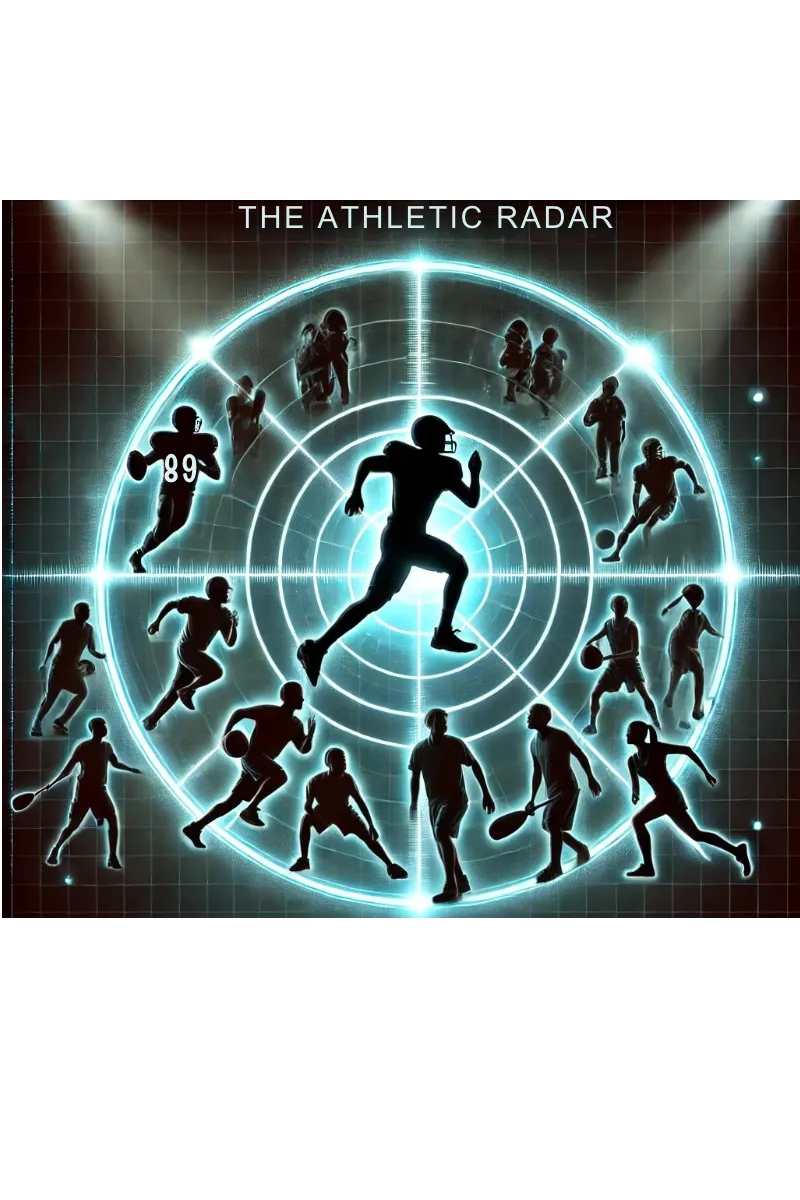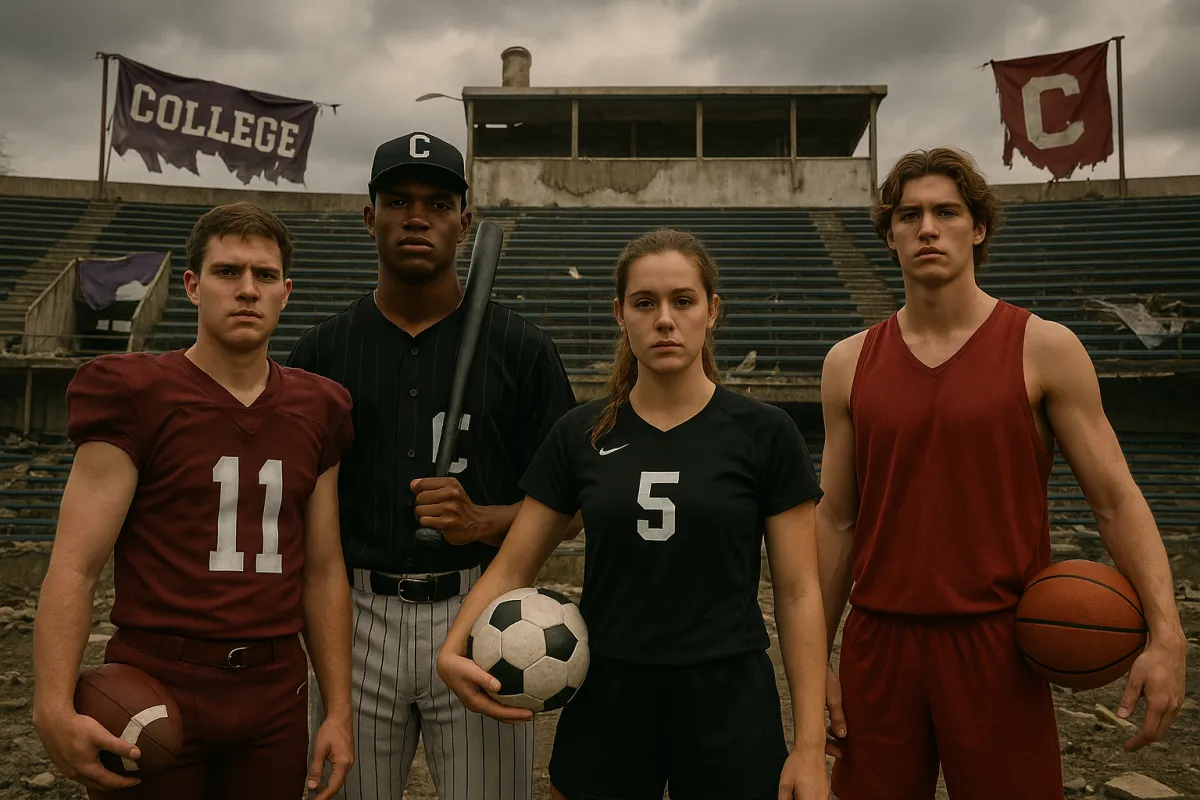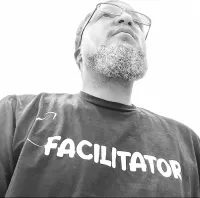

Your Success, Our Priority
Browse our articles below
Make sure to request our FREE Role Player Guide to Recruiting
WHILE SUPPLIES Last!!!
🏀⚽🏐🏈⚾🎾🏒🏊♂️🥍🎽 Free Download: The Role Player Guide to Recruiting
Not a star? Not a problem.
Whether you’re passing, blocking, digging, assisting, or just bringing relentless energy from the sidelines, this guide was created for athletes like you.
The recruiting world often highlights the MVPs and stat-sheet stuffers. Colleges also recruit role players, those who lead quietly, contribute consistently, and do what their team needs most.
This free guide gives you the tools to stand out and get recruited process started, no matter what sport you play.
🙌 This Guide Is Built For:
Athletes in basketball, soccer, volleyball, football, baseball, softball, lacrosse, track & field, cross country, tennis, hockey, wrestling, cheer, swimming, field hockey, and more. Defenders, passers, relays, utility players, blockers, reserves, bench leaders. Student-athletes who want to lead, even without the spotlight. Parents and coaches who want to support without burnout
💥 Why It Works:
Because colleges do not build teams with just stars, they build them with
contributors.
And many of the most successful college athletes were once role players who outworked the hype.

Here's what you get:

✅ How to stand out as a role player in any sport
✅ Tips for gaining exposure—even if you’re not the starter
✅ Scripts & strategies to communicate with college coaches
✅ Sport-adaptable advice and mental performance boosters
✅ A full action plan to move your recruiting process forward
By checking this box, I consent to receive both transactional and marketing communications from this organization. This includes messages related to my account, orders, appointment reminders, special offers, promotions, and other relevant updates. Message frequency may vary. Message and data rates may apply. Reply HELP for help or DELETE to opt out at any time.
Click the more stories button for additional articles

NCAA in Limbo?
NCAA in Limbo?
Chaos now circles the heart of college sports. The NCAA finds itself in limbo, with its authority and future direction questioned at every turn. Student-athletes, coaches, and administrators all feel the uncertainty. The rules that once defined amateurism, eligibility, and compensation now buckle under lawsuits, state laws, and mounting public pressure. What once looked like a unified system has splintered. Stakeholders try to navigate the shifting ground, but clear answers remain elusive. The NCAA’s position, once untouchable, appears more fragile than ever.
How the NCAA’s Authority Became Unstable
For decades, the NCAA dictated the terms of college athletics. Its compliance rules shaped recruiting, scholarships, and competition. Recent legal challenges, however, have forced the association to reconsider its core principles. State legislatures have passed laws allowing student-athletes to profit from their name, image, and likeness. These changes have chipped away at the NCAA’s control, leaving the governing body scrambling to maintain relevance.
Key moments have included Supreme Court decisions and Congressional hearings. These events have spotlighted the NCAA’s struggle to adapt to a modern sports landscape where money, media, and athlete rights dominate the conversation. Institutional leaders now debate whether the NCAA can still serve as the central authority or if college sports will splinter into new alliances. The uncertainty has bred anxiety for everyone connected to the collegiate model.
Recruiting violations and transfer regulations once carried swift consequences. Now, enforcement feels inconsistent. Programs and athletes push boundaries, testing what little authority remains. The NCAA’s internal structure also faces calls for reform, with some voices demanding a complete overhaul.
Changing Rules on Athlete Compensation
Athlete compensation stands at the center of the NCAA’s limbo. Name, image, and likeness (NIL) deals have created a new marketplace, empowering student-athletes to seek endorsement opportunities. State laws have forced the NCAA to loosen its grip, but the absence of a unified national framework fuels confusion and controversy.
Some schools have embraced NIL as a recruiting tool, while others worry about competitive balance. Booster involvement in deals raises compliance concerns. The lack of consistent oversight means some athletes secure substantial compensation while others struggle to navigate the process. The NCAA’s attempts at guidance have failed to deliver clarity, and athletic departments scramble to keep up with evolving expectations.
Coaches, compliance officers, and legal experts now play a larger role in helping athletes manage contracts and endorsements. The stakes have never been higher, as the line between amateur and professional blurs. The NCAA’s limbo state leaves everyone guessing how far compensation rights will reach.
Legal Battles and Courtroom Pressure
Courtrooms have become the battleground for the NCAA’s future. Antitrust lawsuits challenge the association’s ability to restrict athlete compensation and set eligibility standards. High-profile cases have delivered blows to the NCAA’s traditional model, emboldening athletes and advocates seeking greater rights.
Judges have questioned the fairness of NCAA rules, particularly where billions in revenue flow to schools and conferences while athletes receive limited benefits. The association faces mounting legal fees and the prospect of further losses if Congress does not intervene. Legal scholars warn that the current patchwork of regulations cannot last much longer.
Meanwhile, conference commissioners and university presidents watch closely, aware that the outcome of these cases could reshape college sports for decades. The threat of more litigation looms unless a new governance model emerges.
Conference Realignment and the Power Shift
Conference realignment has accelerated as the NCAA’s grip loosens. Schools seek better media deals and more favorable competitive environments, shifting allegiances with little warning. The traditional geographic boundaries that once defined college sports have eroded, replaced by financial motives and television contracts.
Power conferences now negotiate their own terms with broadcasters and sponsors. The NCAA, once the gatekeeper, increasingly plays a secondary role. Athletic departments evaluate moves based on revenue potential and exposure, driving a wave of expansion and consolidation.
This realignment further weakens the NCAA’s influence. Conference commissioners now set their own agendas, sometimes clashing with NCAA policies. The result is a more fragmented system that challenges the idea of a single, national governing body.
Student-Athlete Voices Take Center Stage
Student-athletes have found their voice, using social media and organized campaigns to demand change. Athlete empowerment movements call for better health care, fair compensation, and more flexible transfer rules. Some schools have responded with improved benefits packages and expanded support services.
Advocacy groups push for collective bargaining rights, seeking a seat at the table in shaping future policies. The NCAA’s efforts to preserve amateurism have struggled to keep pace with this new era of athlete activism. Administrators now acknowledge that listening to student-athletes is not optional. The power dynamic has shifted, giving athletes leverage they have never had before.
University leaders recognize that failing to address these demands could lead to more lawsuits and public backlash. The NCAA’s limbo grows more pronounced as player-driven initiatives rewrite the status quo.
Recruiting, Transfers, and the Portal Era
Recruiting rules once provided structure, but the transfer portal has upended traditional models. Athletes now have greater freedom to change schools without sitting out, leading to unprecedented roster turnover. Coaches adjust strategies, knowing that retention has become as crucial as recruitment.
The portal’s popularity raises questions about team chemistry, academic continuity, and long-term program building. Some coaches welcome the increased mobility, while others warn of unintended consequences for both athletes and schools. The NCAA’s ability to regulate transfers has diminished, with conference policies sometimes superseding national guidelines.
Compliance offices now face the challenge of tracking eligibility and ensuring athletes meet academic standards amid constant movement. The transfer portal reflects the wider limbo facing the NCAA, where old rules no longer provide stability.
Media Rights and the Money Race
Media rights deals drive much of the upheaval in college sports. Television contracts have grown into multi-billion dollar agreements, fueling conference realignment and raising the stakes for every decision. The NCAA’s share of these revenues has shrunk as power conferences cut their own deals.
Broadcast partners seek marquee matchups and star athletes, further incentivizing schools to chase exposure and financial gain. The scramble for media dollars leaves smaller conferences and non-revenue sports vulnerable. The NCAA faces criticism for failing to distribute resources equitably, highlighting the growing divide between haves and have-nots.
University administrators must now balance tradition with the financial realities of modern college athletics. The pursuit of revenue shapes every aspect of the NCAA’s future, leaving little room for error.
Compliance Challenges and Enforcement Woes
Compliance offices struggle to interpret and enforce rules that change with each legislative session or court ruling. The NCAA’s enforcement arm, once feared, now faces skepticism about its effectiveness. High-profile cases linger unresolved, and penalties appear inconsistent.
Schools hire more legal counsel and compliance staff to manage risk. The threat of sanctions still exists, but the process often lacks transparency. Some programs push boundaries, betting that enforcement will lag behind innovation.
Student-athletes, meanwhile, rely on advisors and agents to navigate the evolving regulatory environment. The NCAA’s limbo state undermines confidence in the system’s fairness and reliability.
What Comes Next for the NCAA?
Speculation runs rampant about the NCAA’s next chapter. Some predict a breakaway by the largest conferences, forming their own governing body. Others call for Congressional action to establish a national framework for athlete rights and compensation. University leaders debate whether the NCAA can adapt or if a new model will replace it entirely.
Change feels inevitable, but the path forward remains uncertain. Stakeholders weigh the risks and rewards of reform, knowing that the stakes extend far beyond sports. The NCAA’s limbo state serves as a warning that old assumptions no longer hold. All eyes remain fixed on how America’s premier college sports institution will respond to unprecedented pressure.
New Rules, New Realities
College sports now face a crossroads. Every decision made during this period of NCAA limbo will shape the experience of athletes, coaches, and fans for years to come. The opportunity to create a fairer, more transparent system sits within reach, but only if those in power choose bold action over nostalgia. The future of the NCAA depends on its willingness to embrace change and prioritize the needs of the athletes who drive the spectacle. The old playbook no longer applies. The next move will define the legacy of college sports.
Resources & Community
🎯
Follow Facilitate The Process on Facebook
https://www.facebook.com/facilitatetheprocess/
🌐
Join Our Recruiting Community
🔗
Get Started Today

